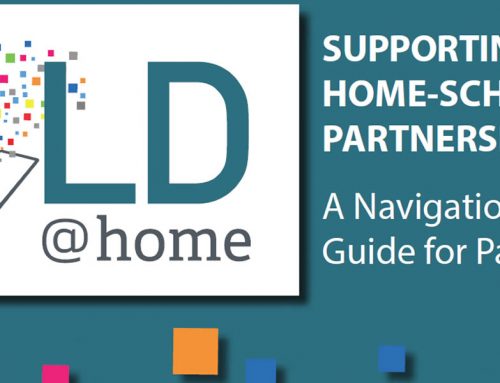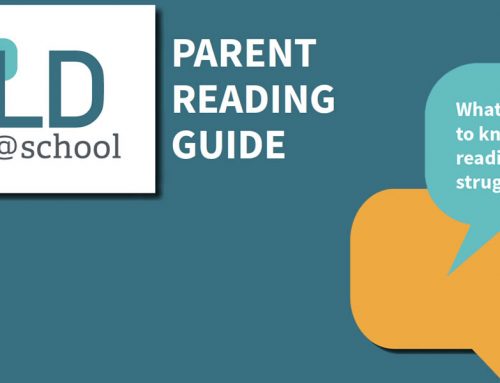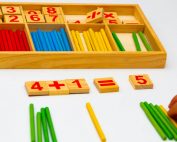As parents we are often bombarded with many questions from our children, some easier to answer than others. You might even find yourself having to answer heart-breaking questions like, “Mom, what’s wrong with me?” or “Why am I not smart?” These dreaded questions may lead you to ask, “How do I explain a diagnosis to my child?”
For some parents, this is a topic they were hoping to never really answer, perhaps avoid and hope that it “just goes away” or is “never brought up”. For others, it is as simple as just saying, “Oh you have this thing called ___”. Regardless of your approach, this can be a very sensitive time for you and your child.
The explanation of a diagnosis can be complex and laden with such emotions that parents often do not know exactly what to say, when to say it or even how to say it. It is important to remember that it is a process that should be positive and based on your child’s individual needs.
The goal of explaining a diagnosis is not to further isolate, but to build self-awareness and knowledge of one’s own abilities. Once a child has this understanding, they can truly accept and be proud of who they are. When kids have a better understanding of themselves, of their areas of strength and need, they are better equipped to advocate for themselves.
“My family worked so hard to help me realize that having this diagnosis is nothing to be ashamed of, and one that truly makes me who I am. Having known about my diagnosis has helped me to work hard to show others that I can in fact learn and work towards my dreams. Now I am always thrilled to tell people that I have a learning disability, was an honours student, won awards for top marks (in math, science, and computer courses) and have completed my B.Sc.” – Caylin, young adult with an LD
To help guide your conversation and get the process started, here are a few tips you may want to consider.
- Deciding when to tell your child is not always easy and is not always agreed upon between you and your partner. There really is no exact age or time correct for all families. As a family, you may want to think about your child’s age, their social awareness and their current understanding of their abilities. Have they already begun to make comments or ask questions about their “differences”? If so, this may be a good time to begin.
- Start by identifying their talents and strengths. When we begin by focusing on what a child can do well, we are helping build their self-esteem and overall confidence in their abilities. A positive mindset can set the stage to manage possible future challenges.
- Have your child draw a picture/self-portrait that represents who they are. This portrait can be used to initiate a conversation about their diagnosis and overall self-awareness. Questions you can ask while reflecting on the self-portrait may include, “What do you most like about being you?”, “Is there anything you would want to change?” “What do you think is the first thing others notice about you?” By creating a self-portrait, children learn who they are, how they want to present themselves, and what is important to them.
- Celebrate differences. Children who understand that every person has traits that make them different from one another, are children who also accept these differences. It is about teaching children that these qualities make every person unique and should be celebrated.
- As much as we want to focus on the positive, it is important and okay to work with your child to understand what challenges they may experience day-to-day. Explain to your child that we all have things that may be challenging for us, especially when it comes to learning, but sometimes what may be challenging now may become one of our many accomplishments later in life.
- Children are better equipped to deal with difficult information when they can see and learn that there are others who are just like them, especially when they are famous or influential people. Consider sitting down with your child and researching famous individuals who may also have the same diagnosis as your child to help show how much they have achieved in life, even with a diagnosis.
- Create self-advocacy cards. Review the information from previous conversations and have your child write down all the things they would like their teachers (or others) to know about themselves. This is a great way to build self-advocacy. Click here to access an article on creating self-advocacy cards.
- As parents you may not have all the answers, so seeking additional professional support (e.g., psychologist, social worker, or therapist) may not only benefit your child, but their siblings and you as well.
- Be patient with the process and your child. Your child may become easily frustrated or even resentful with the fact that they have a diagnosis. This is okay and a common part of the process. Provide support and reinforcement that you love them, and that you are on this journey together.
- Keep the conversation going. During this process there will be several times that your child may say “I’m good” or “I understand” and then not want to talk about it anymore. Though we do not want to force the issue and want them to be the guide, it is important to check-in and revisit this conversation as your child may have some new and unanswered questions.
These strategies are a starting point for a discussion about your child’s diagnosis. The overall process should be positive, feel safe, and build on your child’s strengths and needs. For some children, it may take weeks, or even months, before an actual label of the diagnosis is provided. It is important to remember that when you sit down with your child to help them understand their diagnosis, you are teaching them that this is just a part of them, sort of like having blue eyes or brown hair. A diagnosis should NOT define who they are; it is about understanding and empowerment. Your goal is to raise a confident individual who can advocate for themselves and hopefully others.
Resource
Reference
Arnold, J. & McLeod, F. (2017). How to Explain a Diagnosis to a Child: An interactive Resource Guide for Parents and Professionals. Toronto, ON: Ingramspark
About the authors
Janet Arnold, BA Psych, RECE
Janet Arnold is a mother and advocate for her two boys. She has experienced what it is like to have a child with a disability, and has spent countless hours explaining the diagnosis to her own son. Not only is Janet a mother, she is also a professional with over 20 years of experience working with children and youth with varying challenges, their families, and other professionals in clinical and educational settings in Ontario, Newfoundland, and Alberta. She is responsible for consulting, training, researching and developing resources that are evidence-based and based on best practices in supporting positive development. Janet is a Behaviour Consultant, HIGH 5® Trainer and an accredited Triple P Practitioner (Standard Stepping Stones). She is also actively involved in a variety of community working groups and is the Chair of the York Region Bullying Prevention Partnership, and holds professional memberships with the Learning Disabilities Association of York Region, the College of Early Childhood Educators (CECE), The Council for Exceptional Children as well as the Association of Early Childhood Educators Ontario (AECEO).
Francine McLeod, BSW, RSW
Francine McLeod is a Registered Social Worker, Behaviour Consultant, Certified Professional Coach, School Counselor and a mother of two girls. She has worked with children and youth with developmental challenges and social-emotional concerns, their families and the systems that support them since 1995. Francine has taken her experience and knowledge of evidence-based and best practices of child development to provide on-going training, consultation, coaching, counseling and resource development to families, therapists, educators and other professionals. Having worked in clinical and educational settings across Canada, she has a strong understanding of the importance of collaboration among families and professionals to ensure that children and youth are more fully included into the fabric of the community.










